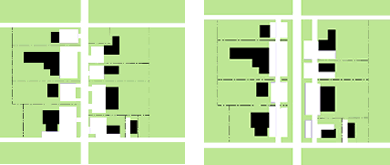Access management is a group of strategies, tools, and techniques that work to optimize the safety and efficiency of our roads.

For example, consider a commercial strip that has developed over several decades along both sides of a two lane road. Without access management, the 100 businesses with frontage on the strip would all have individual curb cuts for their driveways that let you get into their often small parking lot. People trying to get into a businesses would slow traffic behind them, and if turning left across the oncoming traffic lane, a number of risks arise:
-
cars in the oncoming lane, or cars slowing behind the turning vehicle, risk crashes;
-
pedestrians trying to walk along the road are at risk when they cross a driveway;
-
bicyclists riding along the shoulder, face risk as traffic behind the turning vehicle tries to use the shoulder to get around the bottleneck.

(Source: Access Management Guidebook, Humstone & Campoli, 1996)
Multiply this times 100 businesses all day long, and you could have a real mess. Sprawl would be rampant and uncontrolled, safety would be highly compromised, and the resulting traffic snarls would frustrate shoppers and travelers alike. Everyone loses: businesses, residents, and travelers.
Access management is the solution to these very real problems. It helps residential developers build safer neighborhoods. It offers ways to group businesses and parking lots, improving customer access, reducing costs and maximizing efficiency. It facilitates left turning without slowing traffic or compromising safety. It makes roadways safer and more inviting for customers, pedestrians, and bicyclists.
Contact
Craig S. Keller, PE, Chief of Utilities and Permits, VTrans
802-279-1152 | craig.keller@vermont.gov
